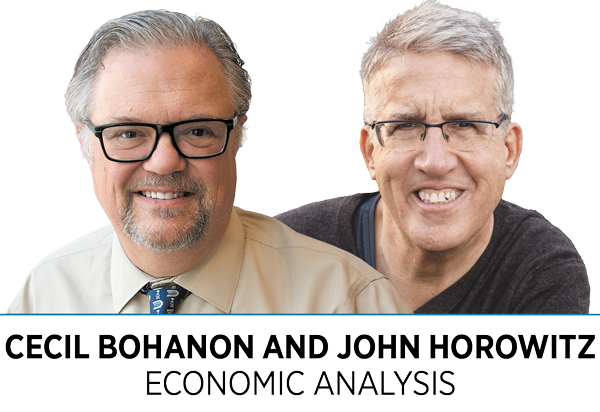Subscriber Benefit
As a subscriber you can listen to articles at work, in the car, or while you work out. Subscribe Now The world economy is estimated to generate over $100 trillion in gross domestic product in 2024. Meanwhile, the USA’s economy is estimated to create $27 trillion in GDP. Despite our nation’s problems, it plays an extra-large role in the world’s economy.
The world economy is estimated to generate over $100 trillion in gross domestic product in 2024. Meanwhile, the USA’s economy is estimated to create $27 trillion in GDP. Despite our nation’s problems, it plays an extra-large role in the world’s economy.
The U.S. Federal Reserve has a tremendous responsibility to stabilize the value of the U.S. dollar. The Fed is more or less committed to providing an anchor for the world economy by targeting the U.S. inflation rate to be 2% a year.
The U.S. inflation rate began rising well above the 2% benchmark in the spring of 2021 and continued to rise to a peak of 9% in the summer of 2022. Since then, consistent hikes in interest rates have significantly decreased the inflation rate. Nevertheless, it has stubbornly remained above 3% since last summer. The February inflation rate was 3.2%, a bit higher than the expected 3.1%.
So, what should the Fed do? The Fed has been expected to cut rates later this year, but the February inflation report led to speculation that it might delay the timing of those cuts. We are sure Fed policymakers are looking rather carefully at various economic indicators. They are well-advised not to make policy based on minor deviations in reported economic statistics from expectations. But we are also reminded of the medical advice we receive when on an antibiotic regimen: Stay the course and finish the treatment, even when you feel better. We’d feel much better if the reported inflation indicator dipped below 3% before the Fed reduces interest rates.
Our favorite indicator of future inflation is the St. Louis Federal Reserve’s 5-Year Breakeven Inflation Rate. In its own words, it “represents a measure of expected inflation derived from 5-Year Treasury Constant Maturity Securities and 5-Year Treasury Inflation-Indexed Constant Maturity Securities. The latest value implies what market participants expect inflation to be in the next five years, on average.” The good news is that, at the time of this writing (March 15), it was at 2.39%–well below its Oct. 19 peak of 2.52%. The bad news is that it is well above its low point of 2.05% on Dec. 6. This increase indicates market participants have less confidence that the Fed will follow through on achieving its goal of 2% inflation. We think the Fed should follow through on its commitment to bring inflation down to 2%.•
__________
Bohanon and Horowitz are professors of economics at Ball State University. Send comments to [email protected].
Please enable JavaScript to view this content.
